Active 1846–present Type State defense force Founded 1846 | Allegiance State of California Size 1,500+ | |
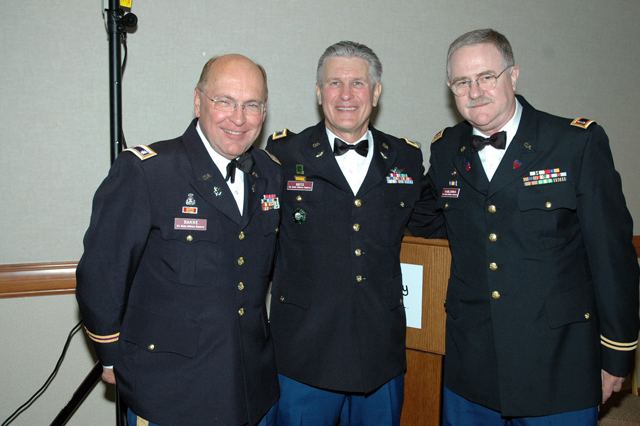 | ||
Country United States of America Role Provide an adequately trained and organized State military reserve force under the exclusive control of the Governor Motto Always Ready, Always There Part of California Military Department Similar California National Guard, State defense force, California Army National, California Air National, Tennessee State Guard | ||
The California State Military Reserve (CSMR) is the state defense force of California, and one of three branches of the Active Militia of the State. The military reserve was formed to provide California a trained and organized military force in the event of a state security emergency when the National Guard is deployed. Its current mission is articulated in CA Military & Veteran's Code § 550:
Contents
- Organization
- Members and Recruiting
- Training and Qualifications
- Units
- Federal Activation
- Duties
- Uniforms
- Naval Militia
- Operation Fall Blaze
- Operation Lightning Strike
- In popular culture
- Possible Name Change
- References
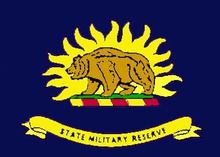
"... as the Governor may deem necessary to defend and for the security of this State ..."
Organization
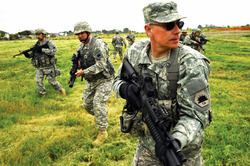
The California State Military Reserve is authorized as a state defense force under the provisions of the Title 32, United States Code, Section 109(c) and the California State Military Reserve Act (codified in the California Military and Veterans Code). It is one of five components of the California Military Department and has legal standing as part of California's Active Militia.
Members and Recruiting
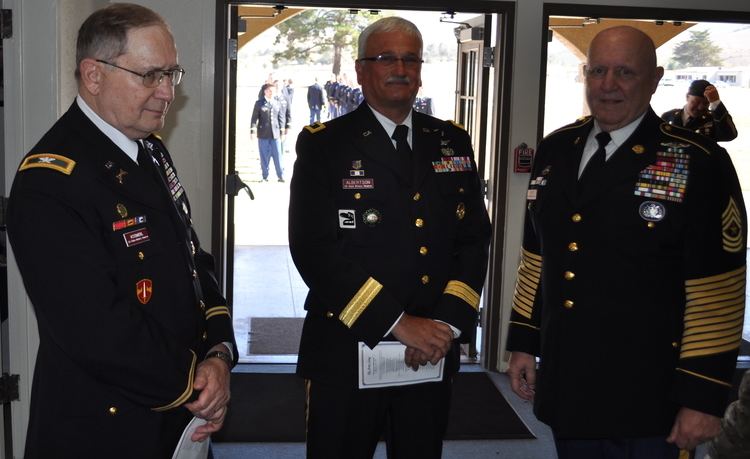
The force consists of citizens or individuals who have begun their naturalization process, who possess a variety of skills, and many members are veterans of other branches of the United States Armed Forces as well as former members of the California Army and Air National Guard. All citizens over the age of 18 who are not felons and possess a high school diploma or GED are eligible to apply for membership, although military veterans and those with special skills which materially contribute to the CSMR's mission are preferred.
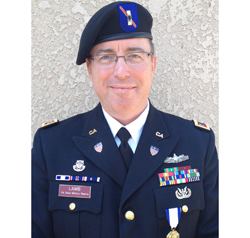
Members are considered uncompensated State employees, although when called to emergency State Active Duty, they become compensated employees at the same rate as National Guard members of the same rank.
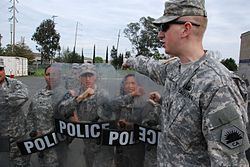
Unlike the Civil Air Patrol or the United States Coast Guard Auxiliary, the CSMR is a statutory military entity of the State with each CSMR member subject to the Uniform Code of Military Justice (UCMJ) per CMVC § 560.
Training and Qualifications
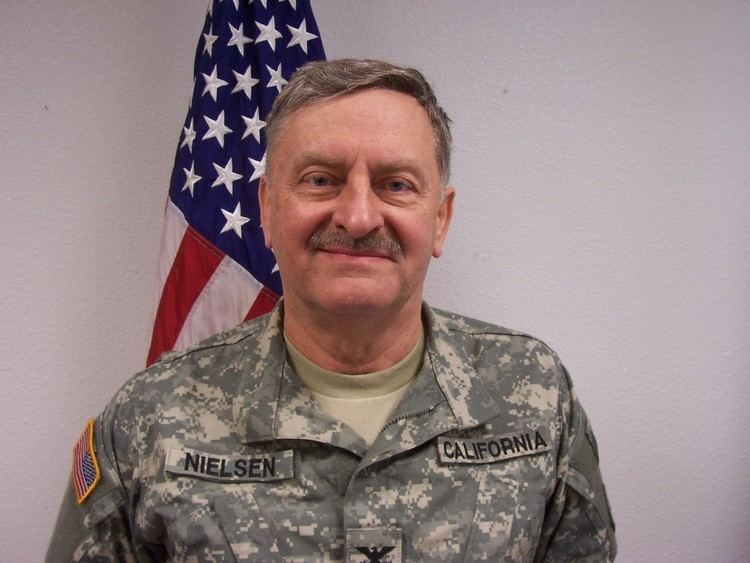
Prior service soldiers find an easy transition into the CSMR. Any MOS qualifications, ribbons, medals, badges, or awards earned in federal or state national guard service transfer directly; this includes "combat patches". Depending on the rank earned and length of time since separation, previously-held rank in those services also transfers.
CSMR Regulations require all soldiers to attend the Basic Orientation Course (BOC) which consists of basic military customs and courtesies and a general overview of the CSMR. This is just a basic course spanning a few days at most. In addition to this, any soldier entering the CSMR in the southern region (RSC-S) must attend an Initial Entry Training (IET) course through the RSC(S) HHC Training Company. This is a five-month course where soldiers report to a student chain of command that changes every month. They are given weekly homework and accountability tasks to strengthen unit cohesion and train soldiers on how to interact with the chain of command. Every month roles are switched around and new soldiers are assigned as squad leaders while soldiers completing Echo track (final phase) graduate and are released to their gaining units. During this five-month course they report for UTA at the Training Company IEP (Initial Entry Platoon). They are taught customs and courtesies in depth and practice drill and ceremony. This is as physical as it gets; the course is similar to federal boot camp curriculum and training without the physical component. Soldiers are required to maintain Army height and weight standards, but that is done on the soldier's own time. There is no CSMR equivalent to Advanced Individual Training (AIT): This is done on the unit level once the soldier arrives from standards.
While prior service soldiers retain any MOSq obtained previously, non-prior-service soldiers have no MOS qualification. When Army Knowledge Online (AKO) accounts were available, CSMR soldiers could take courses and become MOSq in select MOS's however at the moment there is no AKO replacement for non-prior soldiers to obtain an MOS. Most of the time the soldier has civilian qualifications that meet or exceed Army standard for a particular MOS and they are used as Subject Matter Experts (SME) to train their national guard counterparts.
Units
As of 1 AUG 2016, the California State Military Reserve has been reorganized. All of the units have been directly embedded with national guard units throughout the state. The current organization is as follows:
The old command structure prior to August 2016 is gone but was as follows:
Federal Activation
Like other state defense forces, CSMR members are generally not susceptible to federal activation. However, 10 USC 331-333 may grant powers to the federal government to call up the CSMR, because militia is defined as both organized (National Guard) and unorganized under 10 USC 311(b). In addition, Article II, Section II of the United States Constitution further states:
"The President shall be commander in chief of the Army and Navy of the United States, and of the militia of the several states, when called into the actual service of the United States"
Duties
The CSMR accomplishes its Homeland Security Mission by providing individual soldiers and airmen as well as rapid response teams to Defense Support of Civil Authorities (DSCA) missions in the preparation, prevention, deterrence, preemption, defense, and mitigation of natural and man-made threats to California.
Members of the CSMR are required to serve a minimum of 200 hours annually. Part of that time is spent at Unit Training Assemblies (drills or meetings) which are usually eight to twelve hours on one Saturday each month. Many units require 2-day drills or more depending on their mission. These drills are used for training sessions, activity coordination, and to work with their National Guard counterparts. CSMR soldiers embedded with National Guard units for training purposes will drill the full weekend with their National Guard counterparts.
Uniforms
CSMR soldiers of the Army Component wear the standard Army Service Uniform (ASU) as well as the Army Combat Uniform (ACU) and CSMR airmen of the Air Component wear the standard U.S. Air Force Service Dress uniforms, as well as the Airman Battle Uniform (ABU). All uniforms have distinctive state insignia designating them as a member of the California State Military Reserve. All officers and enlisted members are responsible for purchasing their uniforms and accessories. This could require an investment of $300 or more. A yearly $125 uniform and travel allowance has been authorized for all CSMR soldiers and airmen who have maintained 100% attendance in a twelve-month period.
The Center for Military History is unique within the CSMR in that it has a Distinctive Unit Insignia which is worn by members.
Naval Militia
The California Military and Veterans Code also provides for a naval branch. The California Naval Militia was founded in 1891 and grew to have many ships and sailors at statewide ports, from San Diego to Eureka. It provided officers and sailors to the U.S. Navy during the Spanish–American War and World War I. The California Naval Militia was reactivated in 1976 by the Governor of California. Unlike New York and the few other states with ship-borne active naval militia units, the California Naval Militia is a small unit of military lawyers and strategists who provide advice and legal expertise in the field of military and naval matters for the benefit of California's state defense force. It has not been a branch of the California state militia since it was mustered into the Navy during World War I.
Effective 1 October 2015, California approved the process of reactivating and standing up the Naval Militia. Initially it will take the form of the Maritime Support Element per TAG policy memorandum dated 15 January 2016, a component of CSMR (like the Maritime Regiment of the Texas State Guard) instead of a separate Branch like the New York and Ohio Naval Militias.
Operation Fall Blaze
A past large-scale operation of the CSMR was during Operation Fall Blaze in October/November 2007, where over 100 citizen soldiers of the CSMR were integrated with their National Guard counterparts to help firefighters fight the California wildfires.
Operation Lightning Strike
The CSMR took an active and vital role in the 2008 Operation Lightning Strike, when Governor Schwarzenegger called on over 2,000 troops from the California Army National Guard, Air National Guard, and SMR to help overwhelmed firefighters fight statewide wildfires.
In popular culture
In the 2007 comedy movie Delta Farce, about a group of misfit reservists who think they are in Iraq when they are really in Mexico, the CSMR is alluded to when the characters played by Bill Engvall and Larry the Cable Guy say, "We're just State Military Reserves" "Yeah, SMURFS!".
Possible Name Change
In August 2015, a memo surfaced which mentioned a possible name change. The idea is to revert to "California State Guard" as used during World War II. This is more in-line with the rest of the nation's State defense forces and more closely identifies them with their National Guard counterparts.
